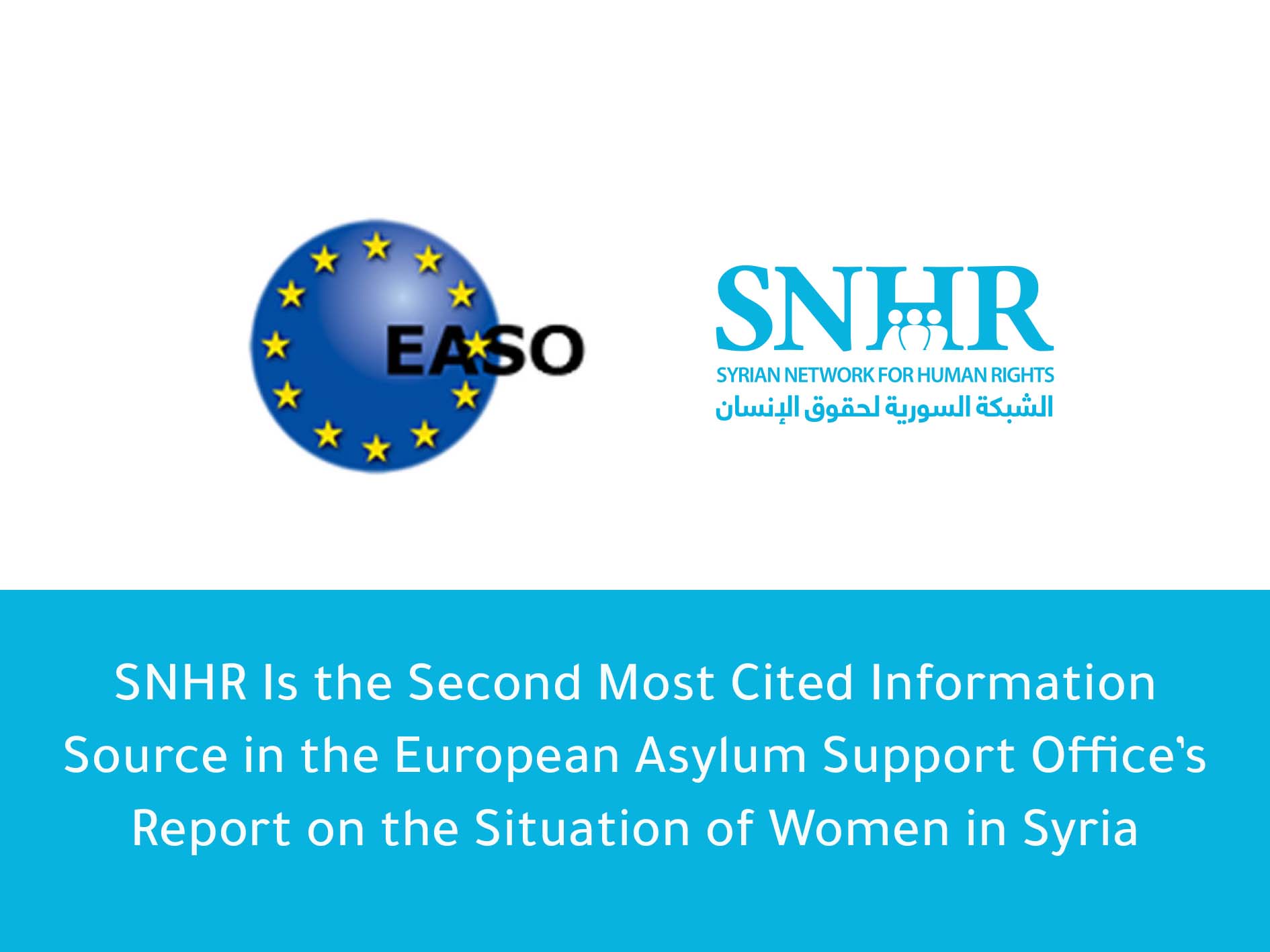
Languages
Available In
On February 7, 2020, the European Asylum Support Office (EASO) released its latest report on the situation of women in Syria.
The report is intended to serve as a tool for policymakers and decision-makers in the context of the Common European Asylum System (CEAS). It aims to assist in the examination of applications for international protection by applicants from Syria, and to foster convergence in decision practices across EU Member States.
The report relies on several human rights sources, most notably, in order of the number of quotes included:
Independent International Commission of Inquiry on the Syrian Arab Republic (COI): 72
Syrian Network for Human Rights (SNHR): 47
Human Rights Watch (HRW): 17
Office of the High Commissioner for Human Rights (OHCHR): 11
The report also cites other sources such as Amnesty International and the United Nations Office for the Coordination of Humanitarian Affairs (OCHA). We have reviewed the 62-page report, and will briefly summarize the most prominent points among its contents here.
The purpose of this report is to analyze the situation of women in Syria, focusing mainly on the general situation of women in the country while also paying special attention to area-specific features in those parts of Syria under the control of non-state armed groups, with such information relevant for international protection status determination, including refugee status and subsidiary protection.
The report consists of two main chapters:
The first chapter deals with the general situation of women in Syria, with its first section focusing on the effects of the armed conflict and related violations against women, since human rights violations, war crimes, and sexual and gender-based violence against women being the most frequently mentioned issues taken into consideration during the refugee status determination process.
The second section of the first chapter provides more background information on the situation of women in Syrian society generally, including legal status, work and education. This part contains mostly information applicable to all Syrian women irrespective of the geographical and administrative context and also some information on specific issues in the areas controlled by the Syrian regime, which affect the majority of Syrian women.
The second chapter of the report – while being considerably more succinct than the first – examines the situation of women in those areas of Syria controlled by non-state armed groups. The sections in this part focus on the situation of women in northwest Syria in areas under the control of Hay’at Tahrir al Sham, in northeast Syria in areas under the control of Syrian Democratic Forces, in areas under the control of Syrian National Army, and in areas under the influence of ISIS.
The CEAS’s report states that a report by SNHR issued on November 25, 2019, concluded that women have been ‘the worst affected’ group in Syria due to their ‘multiple roles and responsibilities as mothers and caregivers,’ and to issues related to their health and status in Syrian society.
The report adds that Syrian women and girls have been subjected to different types of violations such as extrajudicial killings, arbitrary arrests, torture, executions, enforced disappearances, sexual violence, forced displacement, siege, and denial of healthcare and basic services. It also stressed that Syrian women and girls have been directly and deliberately targeted by all parties to the conflict, with Syrian regime forces being the primary, the ‘most prolific’ and the ‘most brutal’ perpetrator of violations targeting women.
The report indicates that the death toll of girls and women reached 28,076 deaths between March 2011 and November 25, 2019, with Syrian regime forces being responsible for almost 78%. A total of 90 women were classified as dying due to torture during the same period, 72 of them at the hands of Syrian regime forces.
The report stresses that the fundamental rights of Syrian women have deteriorated severely during the conflict at every level, whether related to their security or to social, economic, health-related or psychological factors.
In conclusion, SNHR stresses that its contribution to all international reports on the human rights situation in Syria fulfills a duty towards revealing the truth, preserving the rights of victims, and exposing the perpetrators on the largest possible scale, and hopes that its database and the extensive information it contains, compiled over the nearly 11 years, contribute to providing a service in documenting the true history and chronicling the record of true events in Syria, helping to thwart the vigorous attempts by the perpetrators of violations, foremost among which are the Syrian regime, Russia and Iran, to change the narrative of events, and to deny or justify heinous violations. We also stress that we will continue to make the greatest possible effort to document violations and incidents objectively and credibly to achieve the goal of protecting civilians in Syria, defending the victims’ rights, holding all perpetrators accountable, and helping to start the country along the path of positive change towards democracy and respect for human rights, in keeping with our motto: “No Justice without Accountability”.
To read the full report by the European Asylum Support Office, please visit this link.


